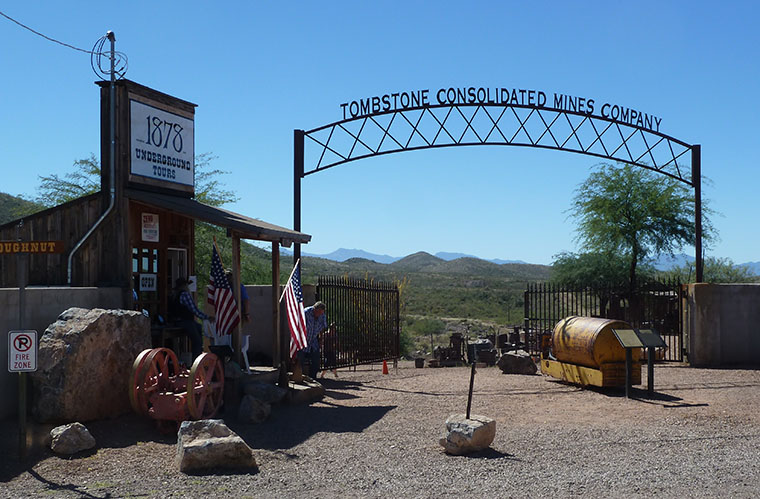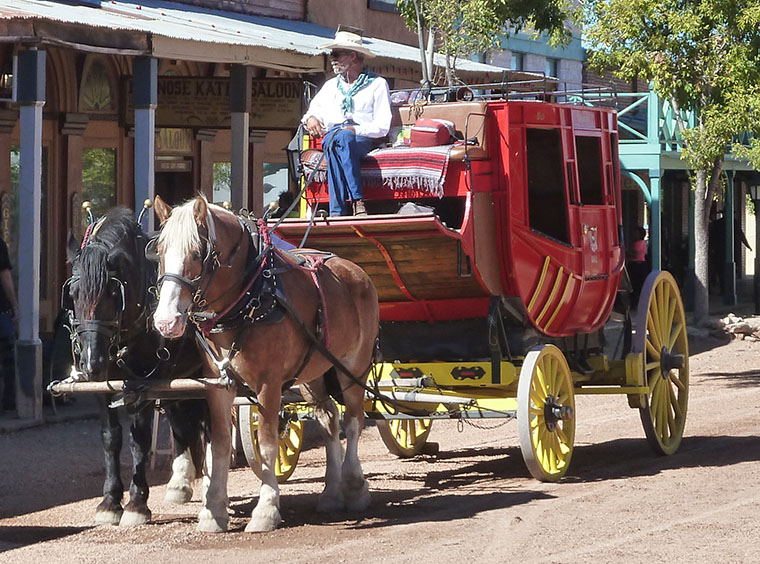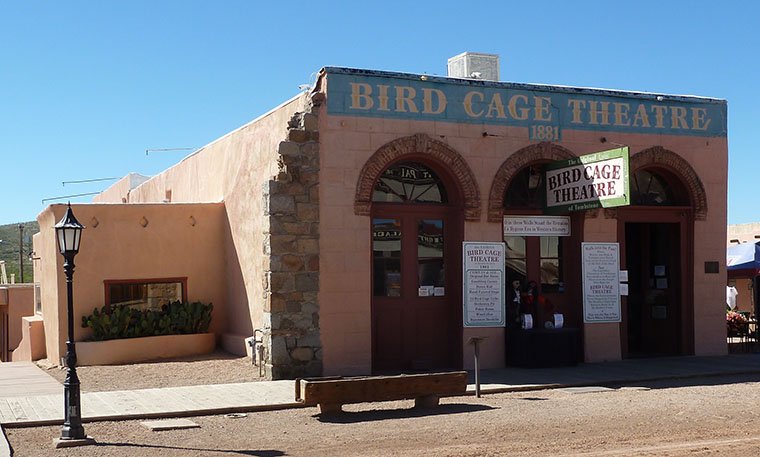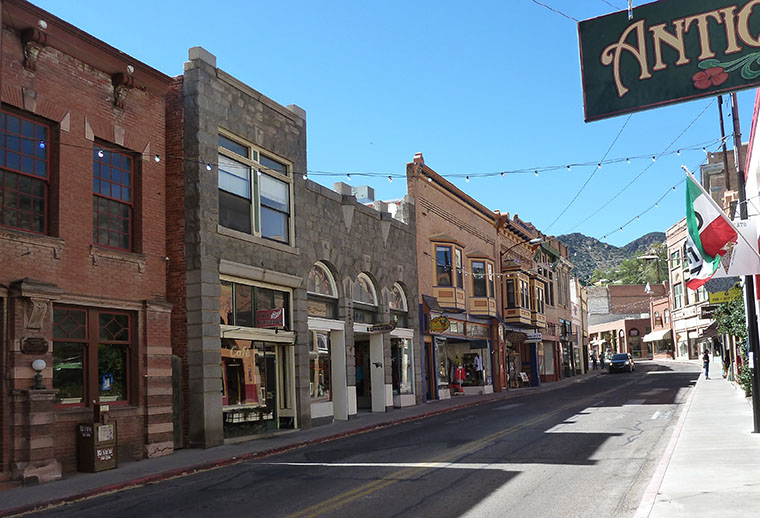Wednesday, Oct 19
Today I left Arizona, crossed New Mexico and ended up in El Paso, Texas. I didn’t take the route I had wanted due to the scarcity of gas. I try to break up longer drives with a gas stop and, when I have 100 miles of gas left, I consult my GPS to find gas along the route. Usually it finds a source within a few miles but sometimes it has been up to 30 miles. Today it was 144 miles which is a problem. I changed the request to find the nearest gas station and that was 44 miles away in Lordsburg, New Mexico. That meant that I ended up driving the rest of the way to El Paso on Interstate 10 instead of New Mexico route 9 which would have been just as quick, fewer miles and kept me closer to the border. For this to make any sense at all you will probably need to refer to the map here. I made two stops along the way in Tombstone and Bisbee, AZ. Both towns came into being during the mining boom of the late 19th century.
In Tombstone the lure was silver which was first found in 1877 by Ed Schieffelin who opened up the Good Enough Mine a year later. It was this mine that I toured today. Tombstone celebrates its wild west history every day with shops, saloons, street theater gunfights, stagecoach rides etc. Many of the buildings are original and most of the locals seem to wear period clothing. I visited Tombstone many years ago and saw the main tourist sites, such as The OK Corral, but there were no public tours of the Good Enough mine at that time. Since many think that, without this mine, there would be no Tombstone a tour seemed essential. The guide was fun, the information was good and the amount of silver ore they removed was amazing but, as usual, my underground photos did not come out well.
Bisbee was a copper mining town from the 1880s right up until 1985. As I have stayed here before and had already visited its main attraction, the Copper Queen Mine, this was literally just a photo stop today.
The entrance to the Good Enough mine in Tombstone. It still has the original timbers supporting the roof and, apart from clearing out debris, is much as it was when it closed in the 1890s.
The main street in Tombstone is pedestrians and horses only. Some of it is original and some is reproduction but they do a good job. This is the stagecoach waiting for its first passengers of the day
and this is one of the original buildings that is much as it was when it closed. The Bird Cage Theatre was a theater, a saloon, a hotel and a brothel. In the 1880s and 90s it was open 24 hours a day, every day 
This is Bisbee’s main historical street. It seems to have been a more genteel place than Tombstone.

Hey, finally got caught up with all your videos!
Thanks for tagging along.